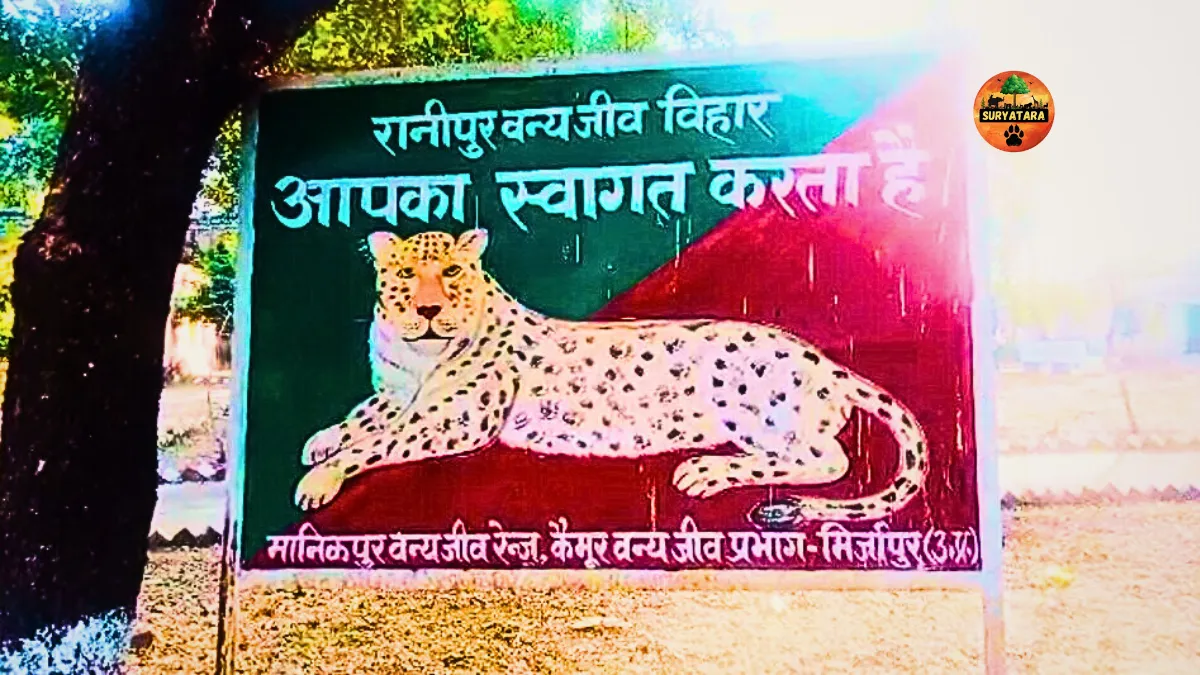Ranipur Wildlife Sanctuary is a lesser-known yet incredibly rich biodiversity hotspot nestled in the Chitrakoot district of Uttar Pradesh, India. Established in 1977, this sanctuary sprawls across 230 square kilometers of rugged terrain in the Vindhya ranges. Despite being one of the most ecologically diverse wildlife sanctuaries in the state, it remains underexplored and serene—ideal for nature lovers, wildlife photographers, and eco-tourists seeking an offbeat experience.

Why Visit Ranipur Wildlife Sanctuary?
Ranipur Wildlife Sanctuary offers an untouched wilderness that gives you a glimpse into central India’s dry deciduous forest ecosystem. It is home to a wide range of flora and fauna, including several species that are rare or endangered. What truly sets Ranipur apart is its peaceful ambiance, where wildlife thrives without the constant influx of large tourist crowds.
Visitors can expect to see a variety of mammals like leopards, sloth bears, sambar deer, and wild boars. It’s also a birdwatcher’s paradise, with more than 200 species of birds reported, including peacocks, parakeets, and eagles. The sanctuary’s terrain—marked by hills, valleys, and streams—adds a layer of adventure for trekkers and explorers.
Key Details About Ranipur Wildlife Sanctuary
| Feature | Description |
|---|---|
| Location | Chitrakoot District, Uttar Pradesh, India |
| Established | 1977 |
| Area | 230 sq. km |
| Best Time to Visit | November to March |
| Nearest Town/City | Atarra (36 km), Chitrakoot (45 km) |
| Flora | Dry deciduous forest, teak, sal, bamboo |
| Fauna | Leopard, sloth bear, nilgai, sambar, wild boar, porcupine |
| Bird Species | Over 200 species, including peafowl, parakeets, vultures, and eagles |
| How to Reach | Nearest railway station: Atarra; Nearest airport: Khajuraho (approx. 130 km) |
| Accommodation Options | Forest rest houses, basic guesthouses in Chitrakoot and Atarra |
Biodiversity at Its Best
Ranipur Wildlife Sanctuary is considered a biodiversity hotspot due to its rich collection of both plant and animal species. The sanctuary lies at the intersection of two different ecological zones, allowing for a unique mix of species from the northern plains and central Indian highlands.
Apart from large mammals, Ranipur is known for its reptiles like monitor lizards and snakes, as well as a thriving insect population that plays a crucial role in the forest’s ecological balance. The flora includes teak, sal, mahua, and various grasses that support herbivorous wildlife.
Exploring Beyond Wildlife
One of the highlights of visiting Ranipur is its proximity to Chitrakoot, a town steeped in spiritual and historical significance. Many tourists combine their sanctuary trip with a visit to Chitrakoot’s famous temples and ghats, such as Ram Ghat and Kamadgiri.
The sanctuary also offers nature trails and trekking opportunities for those interested in outdoor activities. While it is not a fully developed tourism destination like Jim Corbett or Ranthambore, its raw, untouched nature makes it ideal for eco-tourism and adventure seekers.
Conservation Importance
The sanctuary plays a vital role in preserving the ecological integrity of the Vindhyan landscape. Conservation efforts are ongoing, especially to monitor species like leopards and sloth bears, which face threats due to habitat degradation and human-wildlife conflict. Recently, the government has shown renewed interest in developing Ranipur Wildlife Sanctuary as a tourist and conservation-friendly destination, ensuring its long-term protection.
Also read: Mahal Eco Tourism Campsite: A Perfect Blend of Nature, Culture, and Sustainability
Tips for Visitors
- Carry binoculars and a good camera for birdwatching and photography.
- Wear neutral-colored clothes to blend with the surroundings and avoid disturbing animals.
- Avoid visiting during peak summer months (April–June) due to extreme heat.
- Hire a local guide or forest officer to enrich your experience with local insights and safe exploration.
- Book accommodation in advance, especially during the winter tourist season.
Also read: Pobitora Wildlife Sanctuary: A Hidden Gem of Assam’s Biodiversity
Conclusion
Ranipur Wildlife Sanctuary may not yet be on every traveler’s radar, but that’s exactly what makes it so special. Its remote beauty, untouched forests, and thriving wildlife create a natural haven worth exploring. Whether you are a wildlife enthusiast, a researcher, or simply someone seeking peace in nature, Ranipur Wildlife Sanctuary offers an authentic, serene, and enriching experience.













